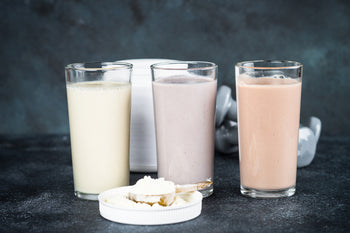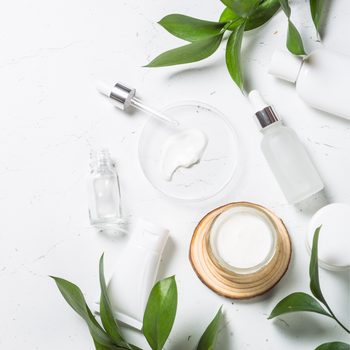 Categories
CategoriesDiet & Exercise
Discover More Articles

It’s no secret that stress can take a toll on our body, mind, and brain. December is not the month to throw your self-care and mental health priorities out the window.

5 Ways to Stay Motivated This Winter
When the seasons change it suddenly becomes harder to get out and exercise. Winter fitness programs aren’t the easiest to stick to, but they’re imperative to your overall health and well-being. So with that in mind, let’s take a look at what you can do to stay motivated and successful with your winter fitness goals.

How to Detox After Holiday Feasts
If you’re having a hard time committing to your diet over the holidays, you’re not alone. And the good news is you don’t have to be perfect to maintain your weight over the holiday season. Try following these simple detox tips after each scrumptious holiday meal and start the new year fresh and ready to finally achieve your health and fitness goals.

High Protein Meal Replacement Shakes
Meal replacement shakes aren’t just low in calories, they’re high in essential nutrients your body needs to keep yourself nourished and your stomach feeling full, while helping also you maintain or lose weight. Protein provides numerous benefits to your body, including fueling the entire body, helping build muscle mass and being a key component to essential substances your body needs, like antibodies and blood.

Skin Cycling: all about the newest trend
The skin cycling hashtag has been viewed over 3 billion times on TikTok—and dermatologists say it's a strategy worth trying.The term "skin cycling" is all about taking a cyclical approach to your facial skincare routine.

Get ready for a plumper, perkier-looking neckline
Meet our new luscious neck cream featuring our proprietary elasticizing bioactive plant blend that targets lines and texture, so your neckline appears smoother, renewed & 10 years younger looking!

TRENDING MAKEUP HACK: BLUSH & BRONZER AS EYESHADOW
By selecting shades that complement each other, you can achieve a harmonious and polished makeup look without the need for multiple products.

5 signs you need more electrolytes
Electrolytes help with hydration by ensuring the body can actually absorb and use the water you drink—preventing dehydration in the presence of sufficient water intake.

Ring In 2025 With ✨ Glowing ✨ Skin…And FREE Boosters!

Better Ingredients, Better You
Your health goals aren’t one-size-fits-all, so your supplements shouldn’t be either. That’s why we designed the Power Line to target different pillars of performance and wellness — from appetite control to anti-aging to athletic power.

Most of the students I’ve had over the years use herbal products that have been commercially manufactured. If you’re one of those people, there is one plant you ought to know how to identify and use because you won’t find a better plant for minor injuries, snake and insect bites, and bee stings. I’m talking about plantain.
Like dandelions and other medicinal weeds, plantain is not native to North America. It was brought here by the European settlers and spread across the land as they spread, a fact that suggests we really need this herb. There are two common species you should learn to recognize. The first, broad-leaf plantain (Plantago major), is pictured on the left and the second, narrow leaf plantain (Plantago lanceolata, is pictured below). Both are common lawn and garden weeds. Here are some of the amazing uses for these plants.

Bee Stings
I learned about plantain as a remedy for bee stings in Edward Shook’s Advanced Treatise in Herbology. He tells of a woman who came to him in great distress. She had only one arm. Some years before she had been stung by a bee and her arm had swollen severely. The doctor had lanced and drained it of pus, but it continued to grow worse and was eventually amputated. Now, she had a bee sting on her remaining hand and was in despair, fearing that she would now lose her other arm. Dr. Shook harvested some plantain leaves from his yard and instructed the lady to crush them and apply them as a poultice. The next day the hand was entirely well.
Some years ago, a neighbor came over. He had a son who had been stung by a bee on his forearm, which had become severely swollen. The swelling was moving to his upper arm and he told me he was thinking of taking the boy to the emergency room, but had heard I was an herbalist and wanted to know if I knew something that could be done.
I gathered some plantain leaves from my lawn (which I did not treat with weed-killers) and crushed the leaves. I had him apply the crushed leaves over the area where the boy had been stung. I told him, "If the swelling doesn’t go down in the next 15 minutes, take him to the emergency room." Fifteen minutes later there was no sign of swelling. So, I can testify as to the effectiveness of plantain on bee stings.

Snakebite
I’ve never had to treat a bite from a poisonous snake. But if I ever did, plantain is one of the herbs I’d want to use. The reason I’d consider plantain is because of what I’ve read about the mongoose in India. The mongoose fights and kills large venomous snakes, such as the cobra. It has been reported that if the mongoose is bitten, he dashes into the jungle, finds plantain, eats eat and rubs the juices in the wound. He then returns to kill the snake.
Of course, I would apply the crushed, fresh plantain leaves on the way to the emergency room, but if you’re out hiking in the wilds that might take a while. And taking the time to apply what is available might make sure you make it to the emergency room at all. In the absence of plantain, I’d use the leaves of any good astringent plant that happened to be nearby.

A Drawing Agent
I remember attending one of my favorite herbalists, Matthew Wood, where he spoke in detail about the uses of plantain. He indicated that plantain was a drawing agent, which could pull morbid material out of the body. He told many stories about this, but one, in particular, stuck with me.
A man got into an accident riding a motorcycle. He skidded on the gravel and badly mangled the skin on his leg. Little bits of dirt and gravel were embedded in the skin of his leg. In the emergency room, they removed many of the larger pieces, but there were many more small pieces that could not be easily removed.
When the man returned home, they treated his leg by juicing fresh plantain leaves and mixing the juice with instant potato flakes to make a poultice. They applied this to the leg and it pulled all the small pieces of dirt and grit out of the wounds and helped them heal quickly.
Matthew also indicated that he had used the crushed leaves of fresh plantain as a poultice after dental surgery to draw out a small piece of a tooth that had not been extracted when the dentist pulled the tooth. He told several stories about how plantain can pull the infection at the base of old root canals and ease pain and swelling after dental surgery.

Burns
In the early 1980s, when I was first getting started in herbal medicine, I attended a workshop held by a group of Utah midwives. A couple of ladies shared their experiences in healing third-degree burns. They had successfully treated third-degree burns, healing them without scarring. The first thing they applied to the burns was an oil of plantain, which they claimed took the pain out of severe burns in minutes. This was followed by alternating a poultice made of fresh comfrey leaves that had been crushed to a pulp and mixed with honey with a poultice of freshly grated carrots. (They may have used some other plants in their poultices, but those are the two I remember.)
The plantain oil was made by putting plantain leaves in olive oil and heating the oil to about 100 degrees Fahrenheit in a stainless steel or enamel container for 24 to 48 hours. This can be done in a warm oven with the door propped open or using a slow cooker set on low. When the leaves became crispy, the oil was then strained and bottled. It can be hardened into a salve using a little beeswax, and is one of the three ingredients in my favorite salve recipe, which also includes comfrey and calendula.

Other Topical Uses
Besides the above uses, fresh plantain leaves can be crushed and applied as a poultice for running sores, itching skin, ringworm, mastitis, bruises, eczema, boils, carbuncles, poison oak and poison ivy, and even tumors. It is a common ingredient in both healing and soothing salves, and in drawing or escharotic salves used for moles or skin cancer.
Dried plantain does not work as well as fresh plantain. You can make a tincture out of the fresh leaves in the same way as I make the tincture of wild lettuce. You put the fresh leaves in the blender (a powerful one like my VitaMix works best) or juice them. You add enough glycerin and/or alcohol to preserve the liquid. (See Modern Herbal Dispensatory for more detailed directions.)
The tincture of fresh plantain can be applied to a cotton ball and used as a compress for insect bites and stings. Because it is too hot and dry for plantain to grow in my yard where I currently live, I’ve used this tincture for both a scorpion sting and a nasty ant bite with positive effects.

Using Plantain Internally
The tincture of fresh plantain is also helpful for drawing deep congestion out of the lungs. For that application, I combine it with grindelia or gumweed. This duo helps loosen congestion deep in the lungs.
Internally, plantain helps heal leaky gut and intestinal inflammation. It can also be applied topically for hemorrhoids.
Although the seeds of the plantain species found in North America are not harvested commercially like the plantain species in India from which psyllium is derived, they do have the same mucilaginous properties and could be harvested on a small scale as a bulk laxative. Plantain leaves can also be harvested and used for salad greens or eaten as a steamed vegetable.
So, if you’re not familiar with this plant, start looking around for it this summer, so you’ll recognize it when you see it. That way, when injuries or stings occur you can look around and make use of this wonderful first aid herb.
